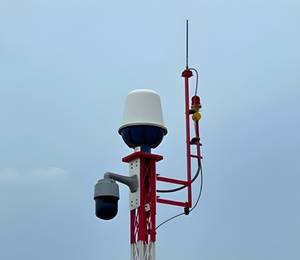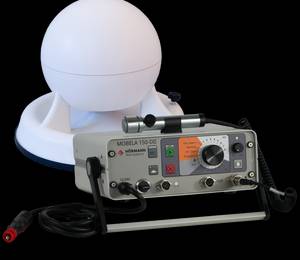Fraud is moving at such a fast pace that companies need many layers of security.
iPhones already use biometrics in the form of fingerprints to unlock devices and retina scanners are used at several border controls. But, could biometrics enter the mainstream and be a part of everyday security?
Today, fraud is moving at such a fast pace that companies need multiple layers of security. Since the 19th century, law enforcement agencies have used biometrics fingerprinting for identifying criminal suspects. The applications have extended in the last fifteen years to airport security checks, law enforcement and for physical access to facilities. Now, biometrics have even expanded to counter terrorism efforts - the technology provides a robust level of identification, helping to validate arriving passengers.
By 2018, Homeland Security plans to introduce fingerprint scanning at 20 of the busiest U.S. airports to reduce the number of impostors entering the country. Biometrics is also being used for more day to day applications - to improve customer service and mitigate the risk of data and money theft. Biometrics could replace identity documents, bank cards and other less secure forms of authentication. Innovation in the banking sector is focused on the use of fingerprints, retina scans, facial recognition and voice recognition for identification.
In fact, according to research by Visa, two thirds of those surveyed want to use biometrics when making payments in the future. Among younger banking customers, this demand is even higher – with a preference for fingerprint and facial recognition technology over pin codes and passwords. Visa also found that nearly a quarter of people aged 18-29 said they would consider changing bank if they were not offered biometric authentication to verify money transfers in the immediate future.
Jia Li, Innovation Intelligence Consultant at CPA Global, sat down with Inside Counsel to discuss which biometric technologies are being patented and who is leading in the space. Per Li, with fingerprint, iris and face scanner technologies now well protected by patent rights, future IP creation will be focused on more advanced technologies: real-time authentication, behavior analysis for user authentication and door lock applications.
These days, the most common applications of biometrics for security include: shopping and finance; home and vehicle security; physical access to facilities; mobile devices. Comparing innovation growth in these application areas with the ‘older’ applications in law enforcement and airport security - in place since the 2000s - suggests growth in new applications is now ahead of traditional industries like retail consumers and mass markets.
The retail sector was an early adopter of digital technologies. In 1998 the National Cash Register Company (NCR Corp.) invented a system for selling restricted goods (such as tobacco) at self-service kiosks by authenticating buyers using biometric scans. The patent NCR Corp obtained for this invention is scheduled to expire in 16 months’ time and the technology will become free to use. Similar technologies have already been adopted in ATMs, schools, fueling stations and retail point-of-sale systems.
“Biometrics provides the retail sector with an opportunity to bring the in-store experience in line with digital shopping,” explained Li. “When consumers shop online, retailers can see what they have browsed for, how long they have spent searching and which items were placed in the basket. When shoppers browse in-store, this information cannot be gathered, but biometrics could change this.”
With the deployment of biometrics, customers could be identified using facial recognition or a ping from their smartphone. Information around their purchase history and preferences could then be used for sales associates to craft a personalized shopping experience, including one-off promotions and product suggestions.
He said, “While the customer enjoys the personalization, the retailer is encouraging repeat business. Ad, the more customers shop, the more developed their data profile becomes.”
Tech giants like Apple and Samsung have long integrated biometrics technology into their devices. Since Apple introduced biometric identification with its iPhone fingerprint sensor in 2013, consumer appetite for biometrics has expanded rapidly. Samsung, Huawei and several other smartphone manufacturers, are racing against each other to implement biometric sensors in their devices – the biggest selling point being that individuals would not need to remember access passwords.
Considering recent cyber-attacks concerns over cybersecurity are at an all-time high. In fact, a 2017 survey from The International Trade Union Confederation (ITUC) solicited responses from more than 15,000 individuals, and found nearly two-thirds are worried about cyber-attacks on banks, government or other services. Research by the Government’s Department for Business, Innovation and Skills (BIS), revealed that the number of cyber-attacks hitting businesses has increased over the last year, with some attacks causing more than $1 million of damage.
“Innovation in biometrics could provide a new recognition system which can be embedded in any system involving access control, e-commerce, online banking or a computer login,” said Li. “Biometric verification will be more convenient for consumers - with no passwords to remember or security tokens to carry - and will better protect sensitive information from hackers.”











